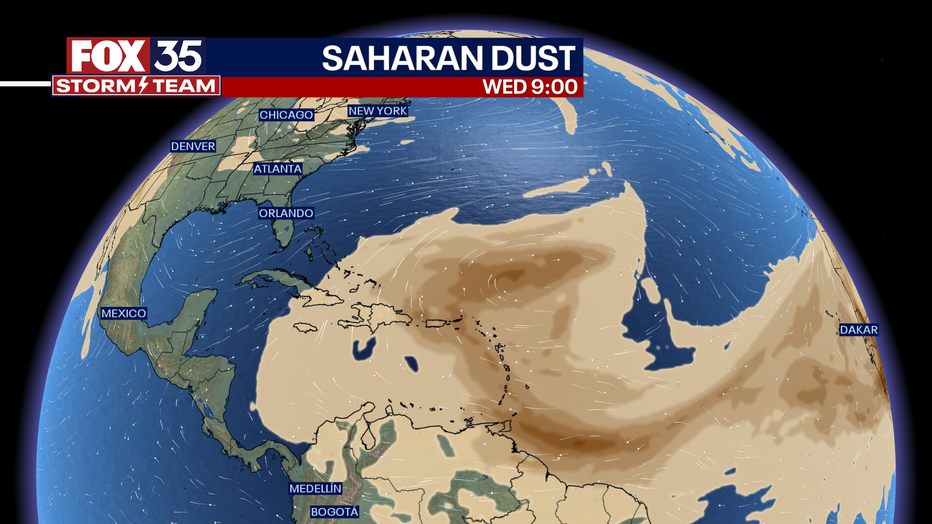Plume of Saharan dust heading toward Caribbean: What is it?
ORLANDO, Fla. - The season's first plume of Saharan dust is making its way across the Atlantic and toward the Caribbean, bringing beautiful sunsets and hazy skies. But what can we expect from the annual peak period of the Saharan Air Layer this time around?
Activity typically intensifies around this time of year in mid-June and peaks from late June to mid-August, according to the National Weather Service. It isn't until after mid-August that the system starts to wave goodbye. Individual Saharan dust plumes can reach as far west as Florida, Central America, and Texas during the peak period and can even cover most of the Atlantic and the U.S.
While it's too early to tell what kind of impact the Saharan dust plume will have on Florida and the rest of the U.S., here's what you can expect:
What is Saharan dust?
The Saharan Air Layer is a mass of dusty and dry air that forms over the Sahara Desert in Africa in late spring, summer, and early fall, according to the National Weather Service. Plumes (also called outbreaks) make their way across the Atlantic and can be about 2-2.5 miles thick and can start hovering at just 1 mile above the earth's surface.
Saharan dust 2023 map

Saharan dust 2023 forecast
Over the next few days, a plume of Saharan dust is expected to move into Cuba and The Bahamas, according to FOX 35 Meteorologist Allison Gargaro.
Will Saharan dust impact Florida?
This plume of Saharan dust is not expected to reach Florida in the next few days, Gargaro said.
Why does Saharan dust cause pretty sunsets?
Dust particles from the plume can make the sky erupt in more vivid colors like orange, pink, and red during sunrise and sunset. They last longer, too!
Does Saharan dust impact hurricanes?
Another positive of Saharan dust is that it helps keep tropical activity at bay. Its warmth, dryness, and strong winds typically suppress hurricane development and intensification. More specifically, the SAL's extremely dry air weakens tropical disturbances and hurricanes by promoting downdrafts around the storm, according to the NWS. Its warmth helps suppress the formation of clouds, too.


